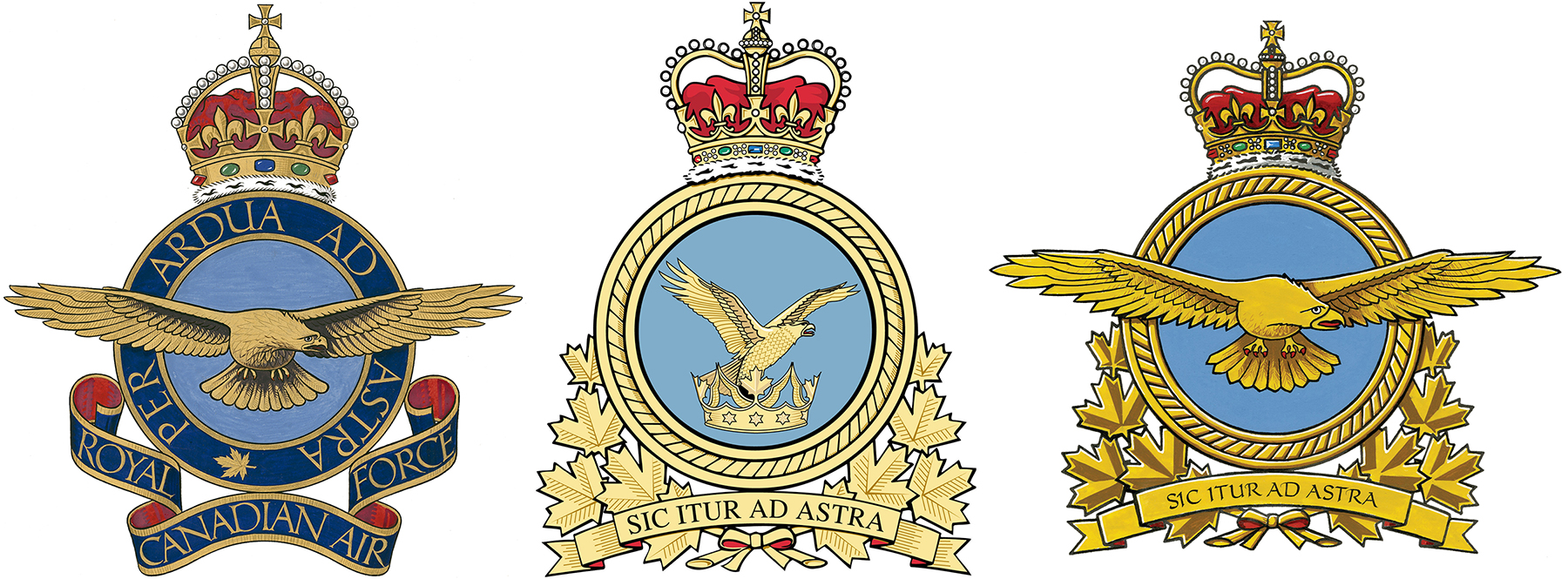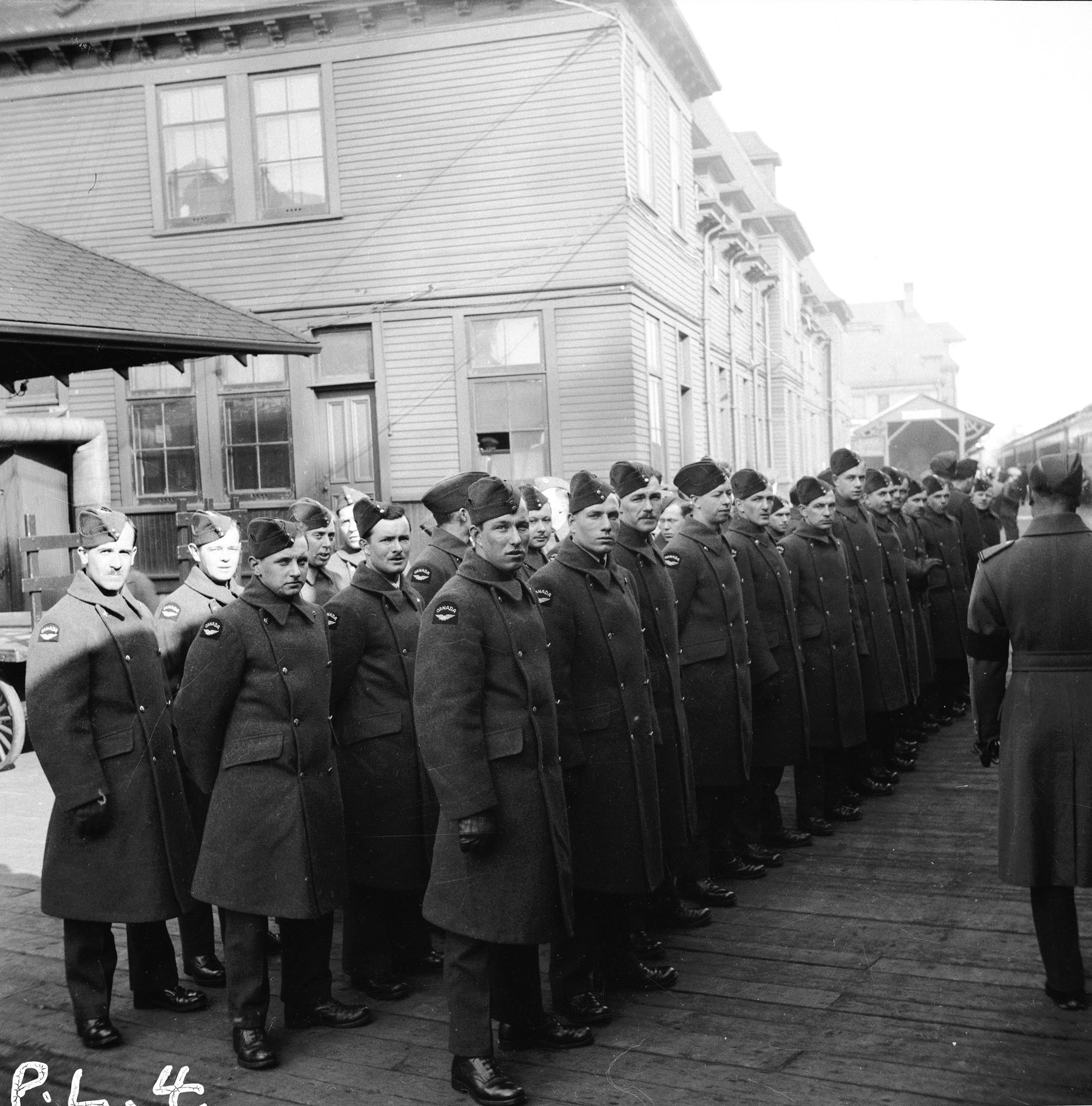RCAF celebrates 97 years of service
News Article / April 1, 2021
Click on the photo under “Image Gallery” to see more photos.
On Thursday, April 1, 2021, the Royal Canadian Air Force celebrates its 97th birthday.
By Joanna Calder
When the First World War broke out, Canadians were eager take to the skies, flying the newest technological development in warfare – the airplane. But those who wanted to join Great Britain’s Royal Flying Corps (RFC) generally transferred from the Army after serving in the trenches of Europe or obtained a basic flying certificate from a private company in Canada and then travelled to Great Britain in hopes of being selected. There was no military aviation training available in Canada, and no Canadian Air Force.
In 1917, the era of military aviation dawned in Canada with the establishment of the Royal Flying Corps Canada (RFCC) in southern Ontario. Its goal: to recruit and train Canadian airmen for service with the RFC (which became the Royal Air Force (RAF) on April 1, 1918, when it amalgamated with the Royal Naval Air Service). A Canadian Air Force would not come into being until late 1918.
Camp Borden – now Canadian Forces Base Borden – in Ontario was the RFCC’s main base. In January 1917, a group of RFC officers, led by Lieutenant-Colonel Cuthbert Hoare, arrived at Camp Borden, which had been used as a camp by the Canadian Expeditionary Force the previous year. Under Lieutenant-Colonel Hoare’s leadership, RFCC built Canada’s first flying station and – at Borden and other locations – trained thousands of aircrew for service overseas, as well as training their instructors and the groundcrew and support staff needed to keep the students airborne.
During the “Great War”, Canadians took to combat flying so well that, by the spring of 1918, the government of Prime Minister Robert Borden pressed for the development of an air wing, consisting of eight squadrons, for service with the Canadian Corps in France.
But Britain wanted to keep talented Canadian air and ground crew within the RAF and they succeeded in limiting the number of Canadian squadrons.
Nevertheless, on August 5, 1918, the British Air Ministry announced the formation of two RAF squadrons to be manned entirely by Canadians. A Canadian Order-in-Council confirmed the formation of the Canadian Air Force (CAF) on September 19 for “the purposes of the present war”.
The CAF was created too late in the First World War for significant growth. Six more squadrons were planned for service in Europe, but with the war's end on November 11, 1918, the plans were not implemented.
What would become of the fledgling CAF?
“In the immediate aftermath of the First World War, Canada’s need for an air force was not readily identifiable,” says W.A.B. Douglas in the second volume of the Royal Canadian Air Force’s official history. “The country faced no discernible external threat. Canadians had little appreciation for expenditures on such esoteric military commitments.
“The short-lived Canadian Air Force…had been left in limbo by the Armistice.”
By February 5, 1920, the two CAF squadrons (still cooling their heels overseas) had been disbanded and their personnel sent back to Canada.
Fortunately, there were several individuals who pushed for government oversight and development of aviation – both military and civilian. On February 18, 1920, an Order-in-Council authorized a new, part-time, non-permanent CAF with a provisional establishment of 1,340 officers and 3,905 airmen.
The first aircraft flown by the new CAF were actually gifts from Great Britain and the United States following the end of the war. Canada also inherited the RFCC stations that had been established in Ontario and CAF training was concentrated at Camp Borden, Ontario, which had been the main training establishment for the RFCC. The aerodrome portion of Borden, which had remained empty since the RFCC’s departure in January 1919, was taken over by the CAF in July 1920.
The CAF became part of a civilian Air Board. Throughout the 1920s and 1930s, the Air Force conducted aerial mapping operations, forest fire, anti-smuggling and fisheries patrols, and forest surveys, and developed airmail and long-distance flying routes.
These operations gave the CAF a raison d’être for continued government funding. This enabled the development of officers and senior non-commissioned members who would later ensure the RCAF made a successful transition from training to wartime operations.
On January 1, 1923, the Department of National Defence was born from the amalgamation of the Department of Naval Services, the Department of Militia and Defence, and the Air Board.
On February 12, 1923, His Majesty King George V bestowed the designation "Royal" on the Canadian Air Force; the Militia Weekly Order of March 12 made the announcement. However, the name didn’t become official until April 1, 1924. On that date, the RCAF became a permanent component of Canada’s defence force and King’s Regulations and Orders for the RCAF came into effect.
April 1, 1924, has been celebrated ever since as the birthday of the Royal Canadian Air Force.
The RCAF began with 62 officers of the Permanent Active Air Force (similar to today’s Regular Force) and four of the Non-Permanent Active Air Force (similar to the Reserve Force), as well as 262 non-commissioned members. By this time, Borden was the most important station in terms of assets, personnel and flying activities for the new Air Force.
The new RCAF adopted the RAF’s motto Per Ardua Ad Astra – Through adversity to the stars – which replaced the CAF’s original motto Sic Itur Ad Astra – Such is the pathway (or “This is the way”) to the stars. The RCAF also adopted the RAF’s blue-grey uniform and, a couple of decades later, also borrowed the RAF’s march past.
Fast forward more than four decades to 1968, and the Unification Act that brought the three services into a single, tri-service force called the Canadian Armed Forces.
The RCAF got the short end of the stick. While the Navy became Maritime Command and the Army became Mobile (later Land Force) Command, the air force disappeared entirely and its functions were spread among five commands: Maritime, Land Force, Air Defence, Air Transport and Training.
Fortunately, Lieutenant-General Bill Carr, the Deputy Chief of the Defence Staff, knew the division of air assets and the lack of a single command structure wasn’t working – and he was in a position to do something about it.
“Unification, when first announced, was – I felt – a good idea,” he said in a 2005 interview. “Within a few years it became apparent that the amalgamation of all the services had particularly impacted the aviation arm in a harmful manner….
“We really needed to create a consolidated organization to properly administer all military aviation in Canada.”
On September 2, 1975, Lieutenant-General Carr’s efforts paid off and Air Command was created. With Lieutenant-General Carr at its helm, the command once again brought all military air assets under a single organization and commander.
A new badge was created, showing an eagle rising from a crown. The new command adopted Sic Itur Ad Astra as its motto, which was a return to the motto used by the Canadian Air Force when it was first established in 1920.
In 2011, the air element in the Canadian Armed Forces returned to its historical roots when its original name – Royal Canadian Air Force – was restored. Two years later, the Governor General approved a new badge for the reborn RCAF that reflected both the old and the new. The centre piece of the new badge shows an eagle with its wings outspread, as did the original RCAF badge. But the motto remains that of the original Canadian Air Force and Air Command: Sic Itur Ad Astra.
Since then, the RCAF has also put in place a new system of rank insignia that reflects the pre-unification colours of silver and black, and the rank of “private” has become “aviator”.
On April 1, 2024, the RCAF will commemorate 100 years of independent service to the Canadian Armed Forces. This will be a once in a lifetime opportunity to celebrate, honour and inspire future generations of Canadians to take ownership of Your Air Force. And it will provide an opportunity to explore our past, present and future as a relevant, responsive and effective air and space power.
Page details
- Date modified:


















